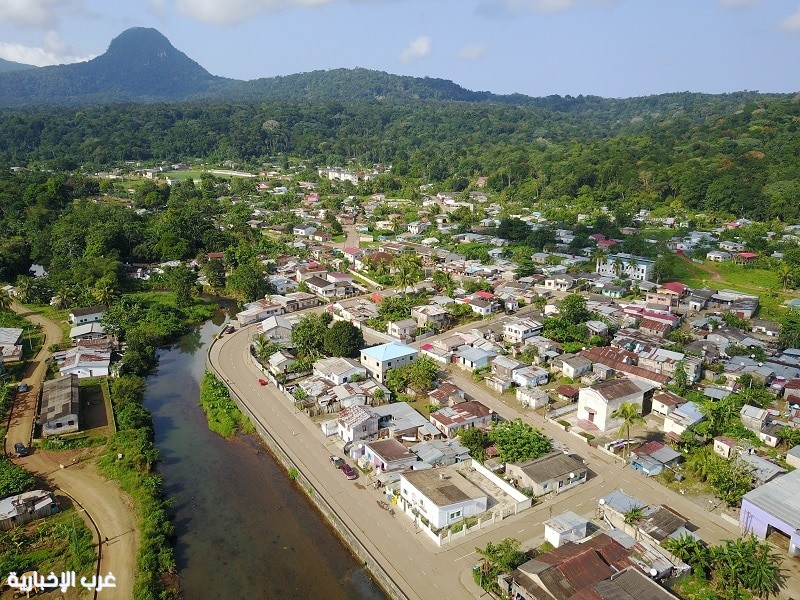São Tomé and Príncipe: The Island of Cocoa and Economic Development


المصدر -
ساو تومي وبرينسيبي.. جزيرة الكاكاو والتطور الاقتصادي
تقع ساو تومي وبرينسيبي في خليج غينيا، وهي دولة أفريقية صغيرة تتكون من جزيرتين رئيسيتين والعديد من الجزر الصغيرة. رغم مساحتها المحدودة، تتمتع البلاد بتاريخ غني وثقافة متميزة، حيث كانت مستعمرة برتغالية حتى استقلالها عام 1975.
الاقتصاد: بين الزراعة والطموح النفطي
يعتمد اقتصاد ساو تومي وبرينسيبي بشكل رئيسي على الزراعة، حيث يشكل الكاكاو المنتج الأساسي للتصدير، إلى جانب جوز الهند والقهوة وزيت النخيل. رغم ذلك، فإن البلاد تواجه تحديات اقتصادية، حيث تعتمد على المساعدات الدولية بنسبة 75%، وقد استفادت من مبادرات تخفيف الديون الدولية.
في السنوات الأخيرة، بدأت البلاد في استكشاف النفط في مياهها الإقليمية، مما يفتح آفاقًا جديدة للنمو الاقتصادي. كما تسعى الحكومة إلى تعزيز السياحة البيئية، مستفيدةً من طبيعة الجزر الخلابة والتنوع البيولوجي الفريد.
المجتمع والثقافة: تنوع وتأثير برتغالي
يبلغ عدد سكان ساو تومي وبرينسيبي حوالي 220 ألف نسمة، ويتحدثون البرتغالية كلغة رسمية، إلى جانب لغات محلية مثل الكريولو. يتميز المجتمع بتنوع ثقافي يعكس التأثير البرتغالي، حيث يظهر ذلك في الموسيقى، الفنون، والمطبخ المحلي الذي يعتمد على المأكولات البحرية والفواكه الاستوائية.
رغم التحديات الاقتصادية، فإن البلاد تحافظ على نظام ديمقراطي مستقر، وتسعى إلى تحسين مستوى المعيشة عبر الإصلاحات الاقتصادية والاستثمار في التعليم والصحة.
التحديات والفرص المستقبلية
تواجه ساو تومي وبرينسيبي تحديات مثل البطالة، ضعف البنية التحتية، والاعتماد على المساعدات الخارجية، لكنها تمتلك فرصًا واعدة في الزراعة المستدامة، السياحة البيئية، واستكشاف النفط، مما قد يسهم في تعزيز اقتصادها وتحقيق التنمية المستدامة.
São Tomé and Príncipe: The Island of Cocoa and Economic Development
São Tomé and Príncipe is a small African nation located in the Gulf of Guinea, consisting of two main islands and several smaller ones. Despite its limited size, the country boasts a rich history and a unique culture, having been a Portuguese colony until gaining independence in 1975.
Economy: Agriculture and Emerging Oil Prospects
The economy of São Tomé and Príncipe is primarily based on agriculture, with cocoa being the main export product, alongside coconut, coffee, and palm oil. However, the country faces economic challenges, relying on international aid for about 75% of its budget, and benefiting from global debt relief initiatives.
In recent years, São Tomé and Príncipe has begun exploring offshore oil reserves, opening new opportunities for economic growth. Additionally, the government is focusing on eco-tourism, leveraging the islands' stunning natural beauty and rich biodiversity to attract visitors.
Society and Culture: Portuguese Influence and Local Traditions
With a population of approximately 220,000 people, São Tomé and Príncipe's official language is Portuguese, alongside local languages such as Creole. The society reflects a blend of Portuguese heritage and African traditions, evident in its music, arts, and cuisine, which features seafood and tropical fruits.
Despite economic difficulties, the country maintains a stable democratic system, striving to improve living standards through education, healthcare, and infrastructure development.
Challenges and Future Prospects
São Tomé and Príncipe faces obstacles such as unemployment, weak infrastructure, and dependency on foreign aid, yet it holds promising opportunities in sustainable agriculture, eco-tourism, and oil exploration, which could drive economic progress and long-term stability.
Would you like to focus on a specific aspect, such as tourism or international relations?
تقع ساو تومي وبرينسيبي في خليج غينيا، وهي دولة أفريقية صغيرة تتكون من جزيرتين رئيسيتين والعديد من الجزر الصغيرة. رغم مساحتها المحدودة، تتمتع البلاد بتاريخ غني وثقافة متميزة، حيث كانت مستعمرة برتغالية حتى استقلالها عام 1975.
الاقتصاد: بين الزراعة والطموح النفطي
يعتمد اقتصاد ساو تومي وبرينسيبي بشكل رئيسي على الزراعة، حيث يشكل الكاكاو المنتج الأساسي للتصدير، إلى جانب جوز الهند والقهوة وزيت النخيل. رغم ذلك، فإن البلاد تواجه تحديات اقتصادية، حيث تعتمد على المساعدات الدولية بنسبة 75%، وقد استفادت من مبادرات تخفيف الديون الدولية.
في السنوات الأخيرة، بدأت البلاد في استكشاف النفط في مياهها الإقليمية، مما يفتح آفاقًا جديدة للنمو الاقتصادي. كما تسعى الحكومة إلى تعزيز السياحة البيئية، مستفيدةً من طبيعة الجزر الخلابة والتنوع البيولوجي الفريد.
المجتمع والثقافة: تنوع وتأثير برتغالي
يبلغ عدد سكان ساو تومي وبرينسيبي حوالي 220 ألف نسمة، ويتحدثون البرتغالية كلغة رسمية، إلى جانب لغات محلية مثل الكريولو. يتميز المجتمع بتنوع ثقافي يعكس التأثير البرتغالي، حيث يظهر ذلك في الموسيقى، الفنون، والمطبخ المحلي الذي يعتمد على المأكولات البحرية والفواكه الاستوائية.
رغم التحديات الاقتصادية، فإن البلاد تحافظ على نظام ديمقراطي مستقر، وتسعى إلى تحسين مستوى المعيشة عبر الإصلاحات الاقتصادية والاستثمار في التعليم والصحة.
التحديات والفرص المستقبلية
تواجه ساو تومي وبرينسيبي تحديات مثل البطالة، ضعف البنية التحتية، والاعتماد على المساعدات الخارجية، لكنها تمتلك فرصًا واعدة في الزراعة المستدامة، السياحة البيئية، واستكشاف النفط، مما قد يسهم في تعزيز اقتصادها وتحقيق التنمية المستدامة.
São Tomé and Príncipe: The Island of Cocoa and Economic Development
São Tomé and Príncipe is a small African nation located in the Gulf of Guinea, consisting of two main islands and several smaller ones. Despite its limited size, the country boasts a rich history and a unique culture, having been a Portuguese colony until gaining independence in 1975.
Economy: Agriculture and Emerging Oil Prospects
The economy of São Tomé and Príncipe is primarily based on agriculture, with cocoa being the main export product, alongside coconut, coffee, and palm oil. However, the country faces economic challenges, relying on international aid for about 75% of its budget, and benefiting from global debt relief initiatives.
In recent years, São Tomé and Príncipe has begun exploring offshore oil reserves, opening new opportunities for economic growth. Additionally, the government is focusing on eco-tourism, leveraging the islands' stunning natural beauty and rich biodiversity to attract visitors.
Society and Culture: Portuguese Influence and Local Traditions
With a population of approximately 220,000 people, São Tomé and Príncipe's official language is Portuguese, alongside local languages such as Creole. The society reflects a blend of Portuguese heritage and African traditions, evident in its music, arts, and cuisine, which features seafood and tropical fruits.
Despite economic difficulties, the country maintains a stable democratic system, striving to improve living standards through education, healthcare, and infrastructure development.
Challenges and Future Prospects
São Tomé and Príncipe faces obstacles such as unemployment, weak infrastructure, and dependency on foreign aid, yet it holds promising opportunities in sustainable agriculture, eco-tourism, and oil exploration, which could drive economic progress and long-term stability.
Would you like to focus on a specific aspect, such as tourism or international relations?










